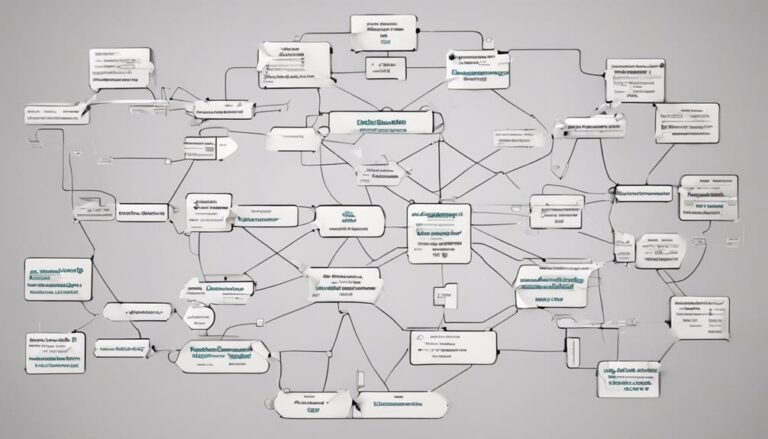What Double Taxation Is and How It Works
Double taxation occurs when the same income is taxed by two different tax jurisdictions, affecting both corporate entities and individual shareholders. In corporate structures, it impacts the tax treatment of income, especially through the taxation of dividends, greatly influencing shareholder returns. C corporations face double taxation with profits taxed at the corporate and individual levels, unlike S corporations that are pass-through entities. International double taxation challenges are managed through strategic solutions and tax treaties, offering guidelines for income taxation. State-level issues involve complex tax regulations and reciprocity agreements to simplify rules and provide tax credits. Understanding these intricacies is crucial for tax efficiency and maximizing returns.
Key Takeaways
- Double taxation occurs when income is taxed at both the corporate and individual levels.
- It impacts corporate entities by taxing profits at the corporate level and dividends at the individual level.
- Understanding tax structures and treatment of dividends is crucial to mitigate double taxation effects.
- Tax efficiency and maximizing returns for investors are central in addressing double taxation challenges.
- Double taxation is managed through strategies like tax treaties and pass-through entities to avoid taxing income twice.
Definition and Impact of Double Taxation
Examining the concept of double taxation reveals its intricate implications on both corporate entities and individual shareholders, shedding light on the complexities of this tax principle. Unintended consequences arise due to the separation of corporations and shareholders as distinct legal entities, leading to challenges in tax legislation evaluation.
This phenomenon can deter international business growth due to high tax rates on dividends, impacting the returns of shareholders. Tax legislation assessment becomes vital to understand the implications of double taxation, especially in C corporations where income is taxed at both corporate and personal levels.
Addressing these unintended consequences requires a thorough analysis of tax laws and potential reforms to mitigate the negative effects of double taxation on businesses and investors.
Double Taxation in Corporate Structures
Double taxation in corporate structures intricately impacts the tax treatment of income for corporations and shareholders, necessitating a thorough understanding of its implications and complexities. One primary area where double taxation manifests is in the taxation of corporate dividends, affecting shareholder returns greatly. Below is a table illustrating the impact of double taxation on corporate dividends and shareholder returns:
| Aspect | Description | Implication |
|---|---|---|
| Corporate Dividends | Profits distributed to shareholders | Taxed at corporate and individual levels |
| Shareholder Returns | Actual returns received by shareholders | Reduced due to taxation at both levels |
Understanding this interplay between corporate structures, dividends, and shareholder returns is essential for optimizing tax efficiency and maximizing returns for investors.
Tax Treatment for C Corporations Vs. S Corporations
In the domain of corporate taxation, discerning between C corporations and S corporations reveals significant disparitites in the treatment of income and dividends, directly impacting the tax obligations of both entities and their respective shareholders.
C corporations are subject to corporate income tax on profits, with shareholders then facing taxation on dividends received. This results in double taxation for C corporation shareholders.
On the other hand, S corporations are pass-through entities, avoiding double taxation by only taxing income at the individual level. This key difference in tax implications between the two corporate structures plays an important role in determining the overall tax burden and returns for business owners and shareholders.
Understanding these distinctions is essential for making informed decisions regarding corporate structures and tax planning strategies.
International Double Taxation Challenges and Solutions
International business operations often face the challenge of managing double taxation on income earned abroad, requiring strategic solutions to reduce its impact on financial performance. Challenges arise when businesses are taxed on the same income by both the country where it was earned and the country of residence, leading to higher tax burdens.
To address this issue, countries often enter into tax treaties aimed at avoiding double taxation. These treaties help limit the tax liability for international businesses, promote cross-border investments, and streamline tax rules. By providing clear guidelines on how income should be taxed in different jurisdictions, these agreements offer solutions to the complexities faced by companies engaging in global commerce.
International business entities must navigate these challenges to optimize their tax positions and maintain competitiveness in the global market.
Addressing State-Level Double Taxation Issues
State-level double taxation concerns can pose intricate challenges for individuals working across multiple states, necessitating a thorough understanding of each state’s tax regulations to mitigate potential tax liabilities. State tax implications vary widely, with residents potentially facing taxes even in states without income tax if they work elsewhere.
Reciprocity agreements between some states aim to simplify tax rules for those filing in multiple states. These agreements may provide tax credits for taxes paid in other states based on factors such as income source and residency. Understanding the nuances of state tax laws and reciprocity agreements is essential for individuals to avoid being taxed twice on the same income and to comply with each state’s tax requirements.
Conclusion
To sum up, when contemplating the complexity of double taxation, one should take into account the significant challenges it poses for businesses and individuals worldwide.
One notable statistic to bear in mind is that in the United States, an estimated $1.1 trillion of corporate profits are held offshore to evade double taxation.
This substantial amount highlights the widespread impact of this tax principle and the necessity for strategic solutions to alleviate its effects on economic competitiveness and cross-border trade.







